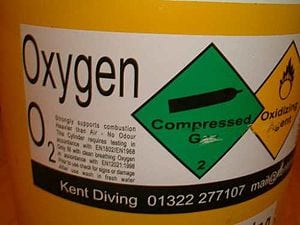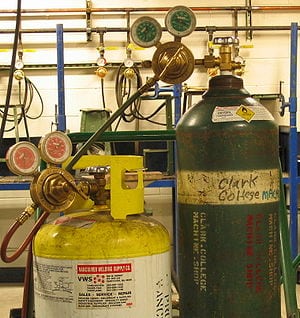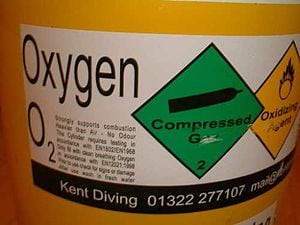Oxygen cylinders can be useful for a variety of purposes – from industrial welding to home use. Those who rely on oxygen to breathe depend on not only their oxygen cylinder’s reliability, but also its capacity. These patients require larger tanks so they do not have to keep refilling the tank, causing unnecessary life disruptions. Finding the perfect oxygen tank is a simple process that requires proper color and letter identification in order to find the right composition and size.

The first step in finding the right oxygen cylinder is to identify the green top of the tank, which signifies it contains oxygen. The green top separates an oxygen tank from other cylinders. An oxygen cylinder is usually made of metal-alloy, composites, or aluminum, which wraps around a container that stores the compressed oxygen. The oxygen remains stable and compressed with over a thousand pounds of pressure. The tank’s capacity depends on the amount of pressure exerted upon it. A great way to test whether or not an oxygen cylinder contains a suitable amount of compressed oxygen is to feel its weight. Heavier tanks indicate that the oxygen is compressed at a much greater force, therefore fitting more of the gas into the tank.

The second step in finding the right oxygen cylinder is to select a suitable size for your needs. Oxygen cylinders come in a wide variety of sizes that are suitable for various needs. Small tanks are ideal for mobile applications, where larger tanks are best for stationary purposes. Many patients utilize smaller tanks for travel and larger tanks for home use.
The standard of compressed oxygen is around 2,000 pounds of pressure per square inch. There are alternative cylinders in the form of composite cylinders, which can store over 3,000 pounds of pressure per square inch. It will depend on the size of the cylinder, but the primary way to tell the amount of oxygen within the cylinder is to look for the letters A-E. A is the smaller cylinder and will usually contain around 34 liters of compressed oxygen with E being the largest variety with around 680 liters of compressed air. The letter M signifies medical oxygen used for hospitals and patients who need oxygen around the home.
Patients in need of supplemental oxygen should consider oxygen tanks before costly oxygen concentrators. Oxygen cylinders are more readily accessible and compact than most oxygen concentrators. In addition, users will be able to save money on electricity and retain their desired level of mobility.
Certain things should always stay in mind when handling compressed oxygen. Oxygen cylinder tanks should always remain upright. It is important to avoid drastic changes in temperature or pressure. Sudden movements or falls can affect the stability of the tank and possibly lead to the leaking or explosion of the oxygen. Users should always be careful when opening the tanks since the pressure could become unstable if improperly opened. If the valve is broken and tampered with in any way, the tank could turn into a dangerous projectile, or explosive device. It is critically important to keep oxygen tanks away from flammable material. Since a patient’s oxygen tank serves as a necessary lifeline, it is important to protect it from any damage so that they can benefit from its use for many years to come.



